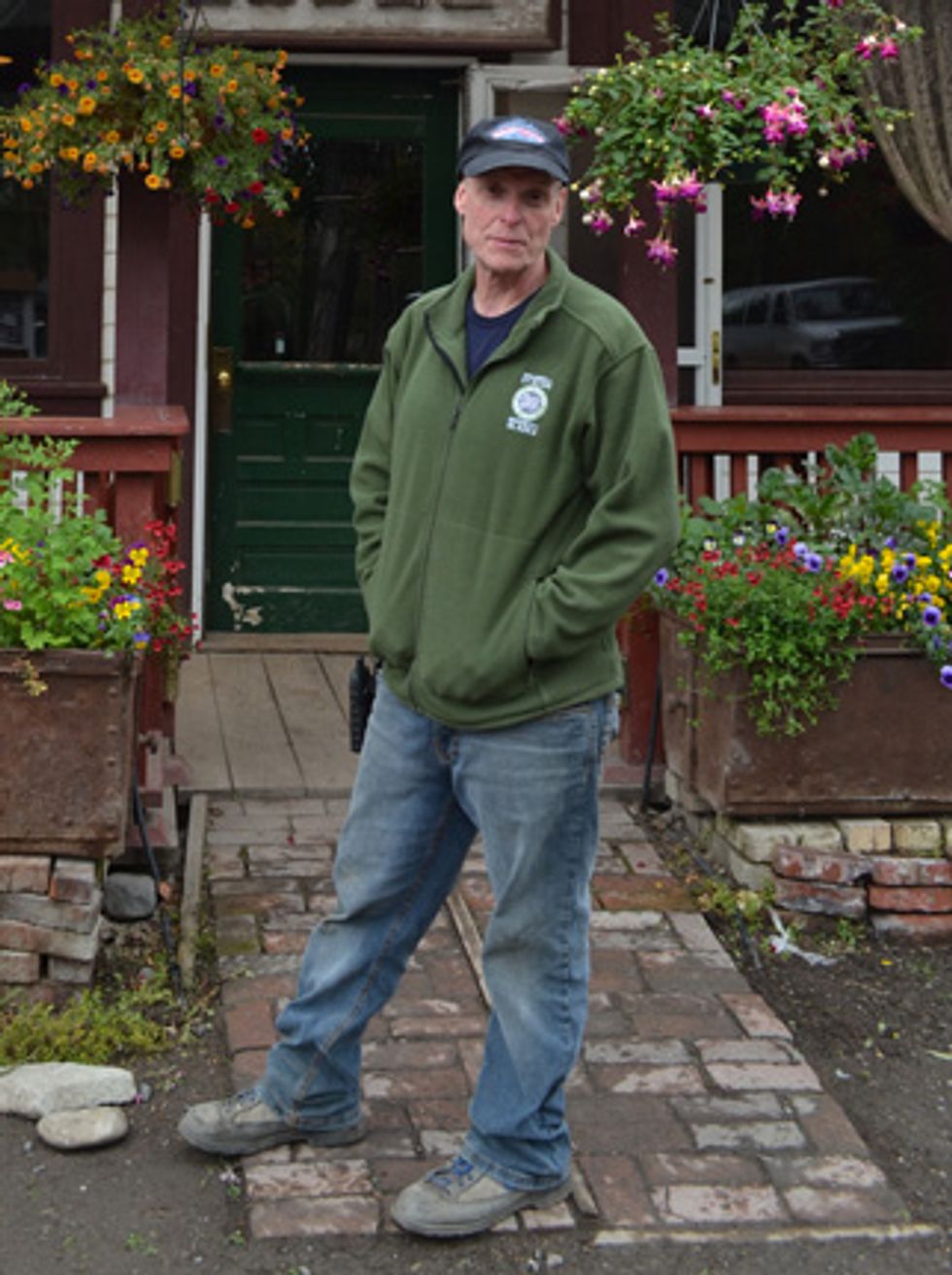The directions to get there are reminiscent of another era: fly to Anchorage, drive northeast for about eight hours. When you get to Glennallen, hang a right. Then take the third road on your left. Don’t forget to fill up with gas in Chitina because it’s your last chance; and once that road becomes dirt, keep driving until it stops. At the river, park your car, put on your backpack and hike across the footbridge (ten years ago, you had to cross by hand tram). After a ways, you will come upon the place where the real adventure begins: The ghost town of McCarthy. A third of this town, is gay-owned and operated.
“I call this ‘Rust Porn,’” says Neil Darish (pictured, right), as he refers to the “historical debris,” some of which was jettisoned a century ago. Everything from old barrels to a Model-T to skis to a whole locomotive turntable. As the saying goes, one man’s trash is another man’s treasure. “Growing up back east, my dad owned a salvage yard,” Darish explains. “So naturally when I first came to McCarthy I was like ‘look at all this cool stuff!’” Darish is McCarthy’s biggest land owner. Originally he came to McCarthy with his then boyfriend, who grew up here. Darish owns the saloon, two restaurants, two hotels, a gift store and a mercantile (comprised of hardware, grocery and liquor stores). He’s been called “The Mayor” of McCarthy, a term he hates because it implies the town has some form of government. In the winter, McCarthy is a population of about 40 individuals. Self-reliance is the foundation of this society, the core value of living in a decaying village, an off-the-road system at the top of the world.
But don’t let the concept of a ghost town in the “middle of nowhere” fool you, it’s more alive than you can imagine, with an incredibly rich history (like, JP Morgan rich). McCarthy is smack dab in the middle of Wrangell St. Elias, America’s largest National Park and Preserve. The epic attractions are what spike the summer population into the hundreds. The biggest draw is ye old Kennecott Copper Mill, two miles north of McCarthy which rests next to the Kennicott Glacier (for the history behind the two different spellings: https://en.wikipedia.org/wiki/McCarthy,_Alaska) In short: what was once the largest copper mine in the world, is now abandoned. An entire city vacated at a moments notice. It’s kind of like walking through a zombie apocalypse from 1938.
If you keep hiking north past the mill, miles of trail lead up in to the mountains to more abandoned mines like Bonanza. You’ll pass falling-down aerial trams, their cars still dangling precariously. It’s like the gondolas of the Alps meets Indiana Jones. If you were to stay along the base, you’ll eventually hit the Root Glacier. Here, many a thrill seeker will be throwing on their crampons to go for an ice climb. Or you’ll catch a single file line of international glaciology students camping in McCarthy for the summer, studying the glacier because of its accessibility. It’s the kind of stuff that makes for good reality TV.
Which it isn’t surprising that Darish, and a few other year-round residents of the greater McCarthy area, are part of Discovery Channel’s all new Edge of Alaska, a reality series which airs on Fridays at 10 p.m. ET. Darish plays the character of the town developer, who’s wicked plan to supply electricity to a community long off the grid will open the flood gates and change the town forever. “The community doesn’t want this place to turn into Disneyland,” says Nancy Lord, writer-in-residence with the Wrangell Mountains Center. But as Darish will assure, “I’m a rationalist. It’s not about turning McCarthy in to a Princess Resort, it’s about expanding for growth. And this town needs infrastructure for that.”
But for the most part, McCarthy and Kennecott have been “renovated” to stay in their current stages of decomposition. If there is growth, it is adapting to more adventurers every summer to witness its ghost town allure. And an adventure it certainly is. Ma Johnson’s hotel is the only hotel with running water. Otherwise you have to bathe, like the glaciology students, in the river. It remains one of the last places you can experience life on the Edge of Alaska.
See more images of Clark and Alaska on the next page.






























































































